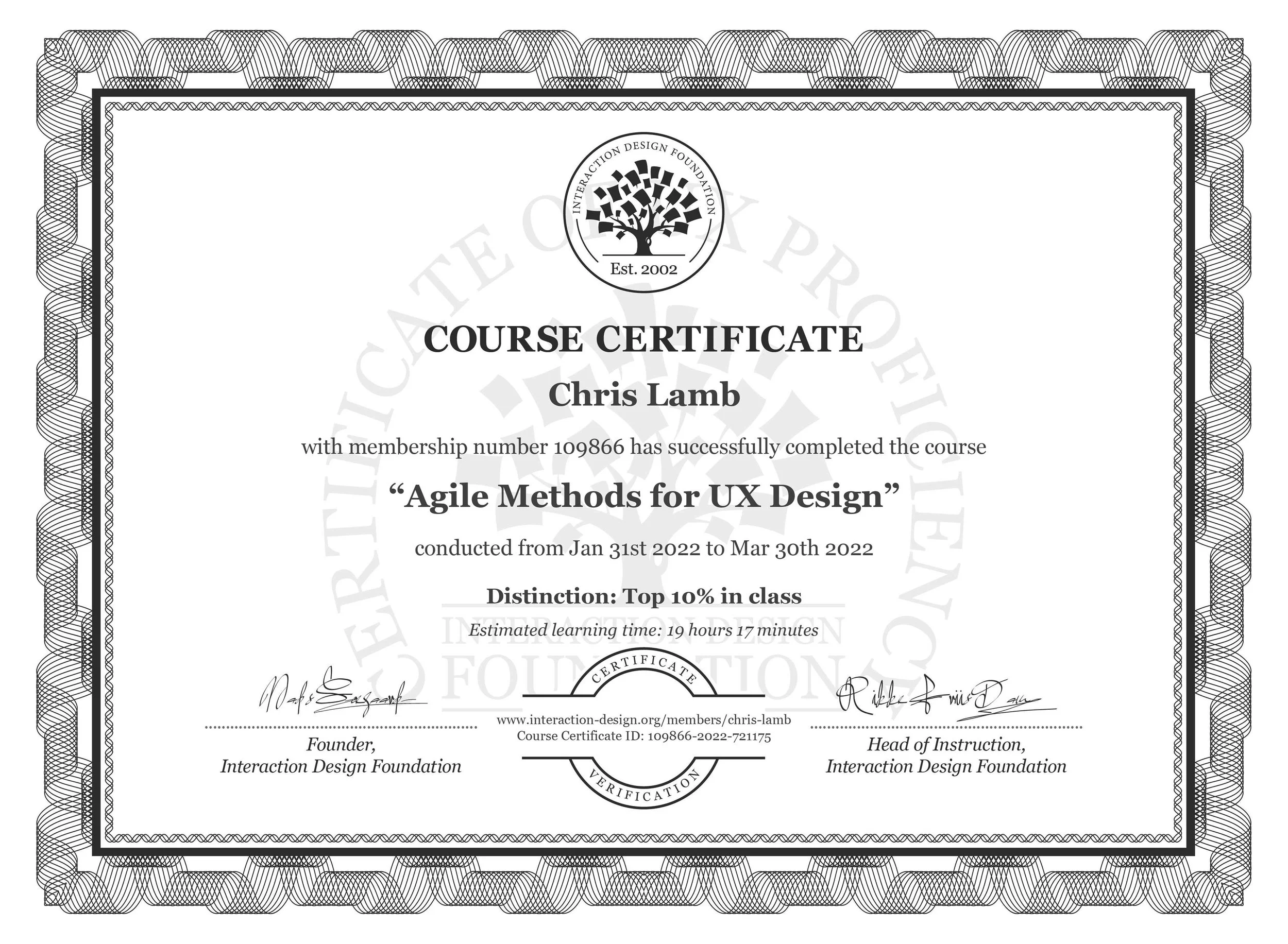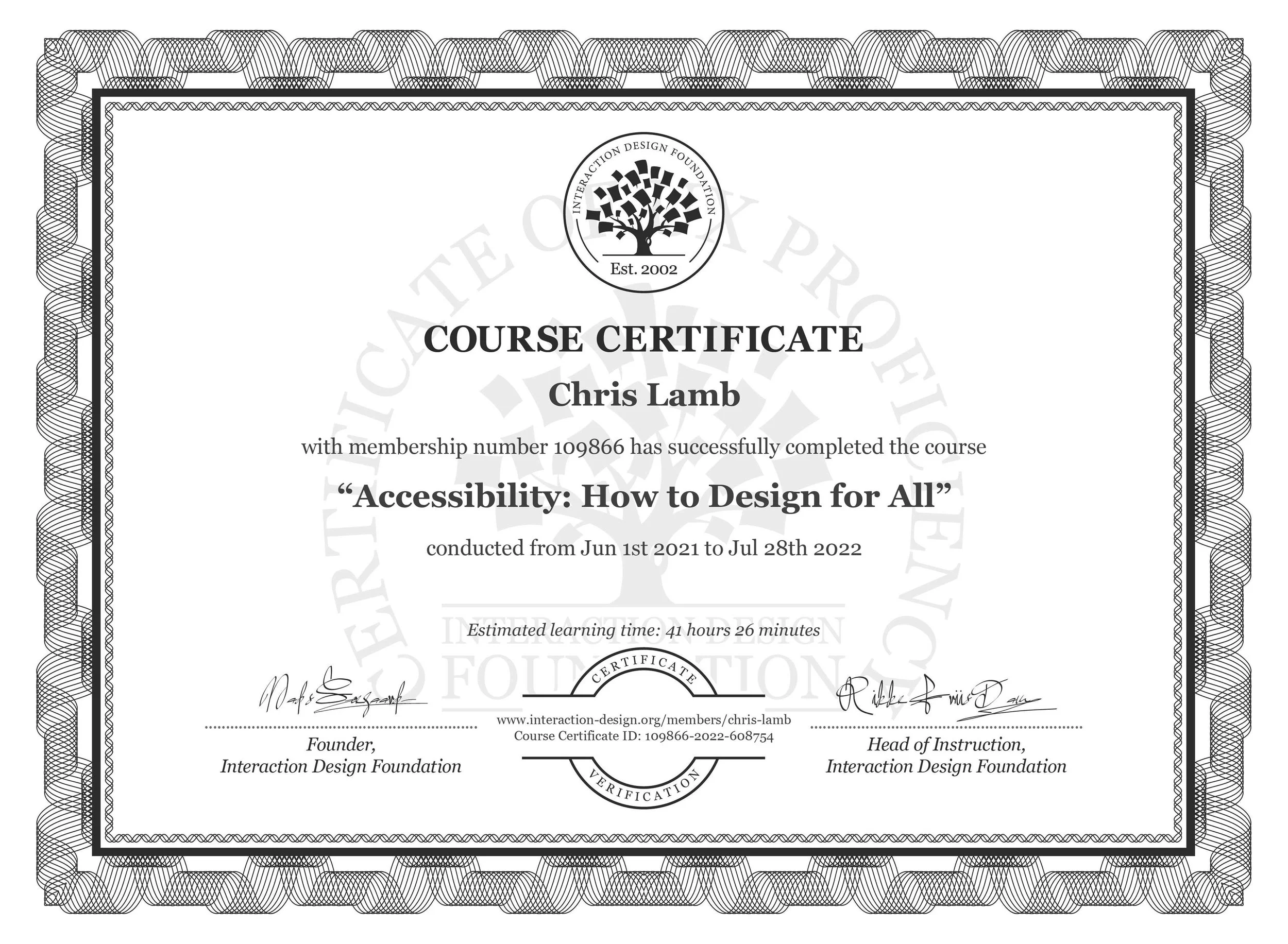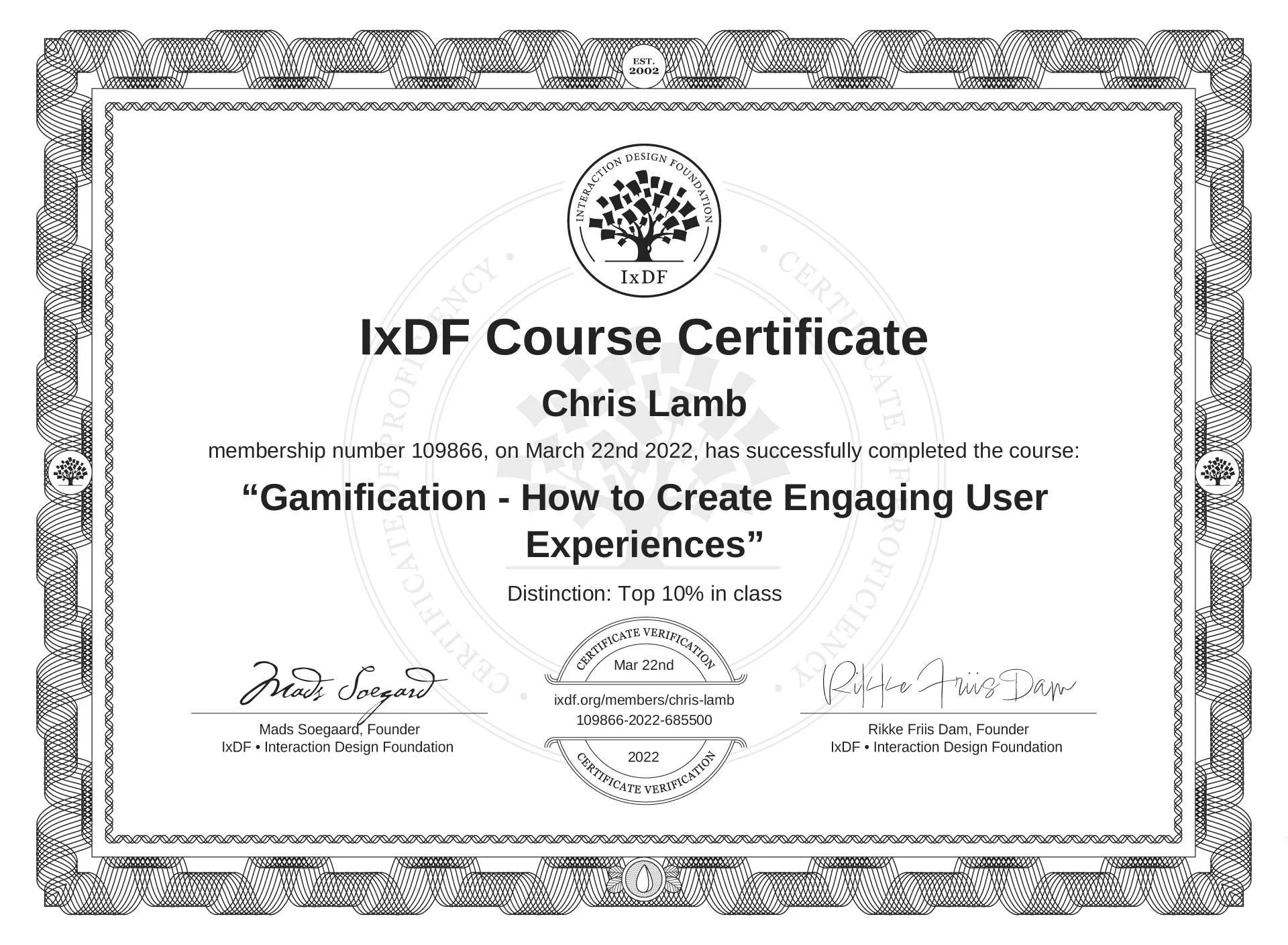Certifications
Key learnings that have helped shape my growth
UX Management: Strategy and Tactics
Interaction Design Foundation
This certification deepened my understanding of the strategic value UX brings to a business — beyond functionality and usability.
Key learnings:
How to develop and implement a UX strategy that aligns with broader business goals and values
How to grow an organisation’s UX maturity by ensuring customer-centric values are embedded into its culture
Design Thinking: The Ultimate Guide
Interaction Design Foundation
This course equipped me with practical tools and methods to build a lean, collaborative design process.
Key learnings:
How to integrate interviews, co-creation sessions, and rapid prototyping throughout each stage of the design process
How to foster a working culture centred on user needs — helping teams clearly define and solve the right problems
Agile Methods for UX Design
Interaction Design Foundation
One of the courses I most recommend for designers working within the Agile framework. It provided valuable insights into how design can thrive in fast-paced, iterative environments.
Key learnings:
How to apply specialised design and research techniques tailored for Agile teams
How to collaborate effectively with engineers and product stakeholders within the constraints of sprint planning
Accessibility: How to Design for All
Interaction Design Foundation
A comprehensive course that covers accessibility from both strategic and practical perspectives — from high-level planning to hands-on design execution. I finished the course with far more insight and practical knowledge than expected.
Key learnings:
How to embed accessibility within design and development processes, rather than treating it as an afterthought
How to design experiences that meet — and exceed — official accessibility standards to ensure usability for all users
Affordances:
Designing Intuitive User Interfaces
Interaction Design Foundation
A deep dive into the concept of affordances in design — exploring what they are, why they matter, and how to apply them effectively within the design process.
Key learnings:
How to design user interfaces that are intuitive, discoverable, and easy for everyone to use
How to create effective feedback mechanisms that help users quickly understand how to interact with a product
Emotional Design:
How to Make Products People Will Love
Interaction Design Foundation
This course explored how designing for emotion can evoke positive responses — such as trust, delight, and satisfaction — to strengthen users’ connection with a product or brand.
Key learnings:
How to manage the user experience across a product’s lifecycle to ensure consistently positive interactions at every touchpoint
How to assess and enhance existing interfaces and products to create meaningful emotional impact for users
Gamification:
How to Create Engaging User Experiences
Interaction Design Foundation
This course examined how incorporating gamification into an experience can boost user engagement, motivation, loyalty, and encourage desired behaviours.
Key learnings:
How to design, implement, and monitor gamified elements throughout the end-to-end user experience
How to develop gamification initiatives that are legally compliant, ethically responsible, and aligned with key business objectives
AI for Designers
Interaction Design Foundation
This course focused on the emerging ways AI can be integrated into a designer’s workflow. While highly practical in its approach, it offered tangible methods and frameworks that I could immediately apply to my own design processes.
Key learnings:
Gained a deeper understanding of AI’s impact on the design industry and evolving practices
Learned how to apply core AI principles within the design process, including the fundamentals of effective prompt engineering






